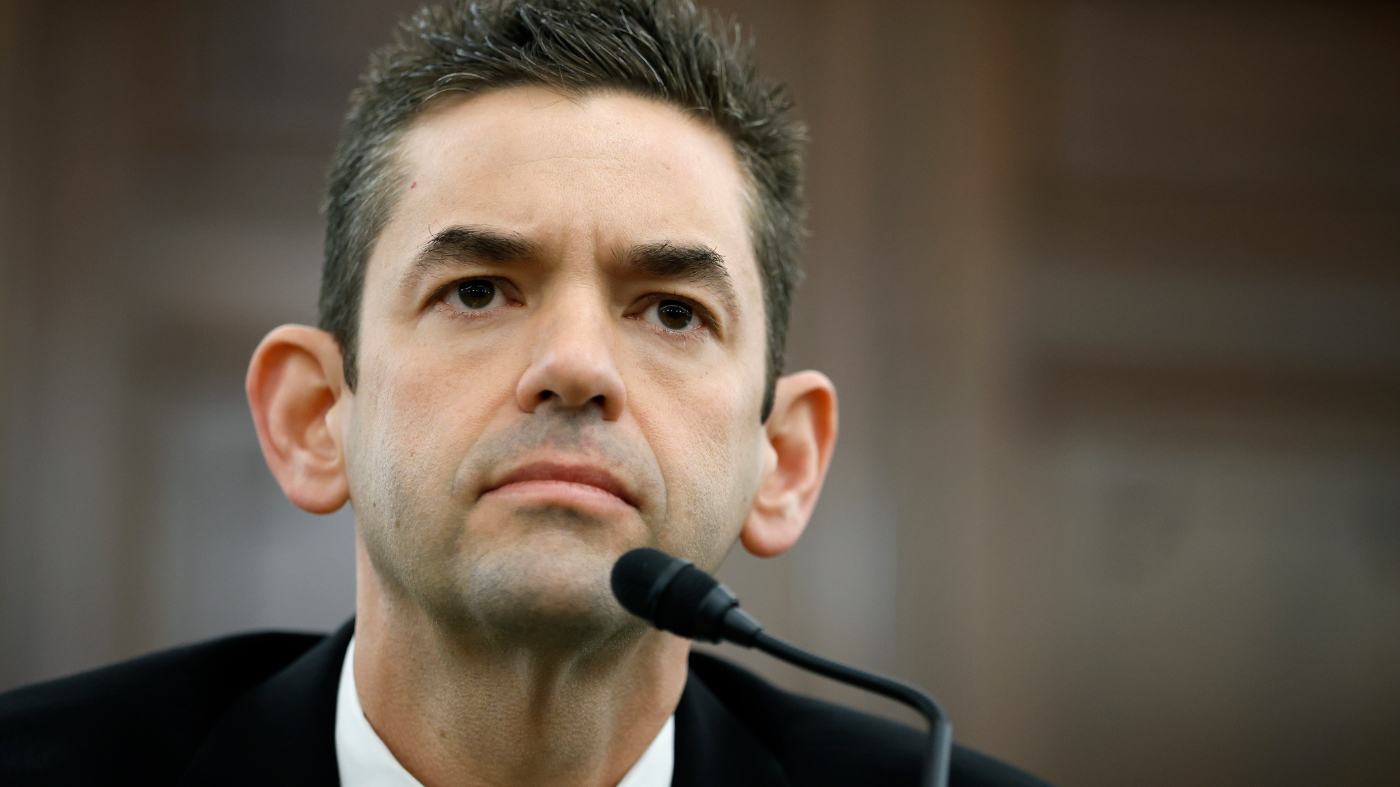Keith Haring’s “Unfinished Painting” is known as a powerful social commentary on the AIDS crisis, which cut short the lives of many people in the gay community, including Haring himself.
But years later, using artificial intelligence, a social media user decided to “complete” the piece — prompting outrage online among artists who argue that using AI destroyed the piece’s meaning.
Haring died in 1990 at age 31 from AIDS-related complications. The piece is on an almost entirely white canvas, except for the right corner, which features colorful figures in Haring’s signature style. Streaks of paint also run down from the corner.
Artist Brooke Peachley shared a post of the painting on X in June, writing that for her it’s an example of “visual art that never fails to destroy you.” On Sunday, another X user who goes by Donnel gave it the AI treatment, and it went viral within days.
“The story behind this painting is so sad!” Donnel wrote with a sad face emoji and an attached altered version of the piece, which fills the white space of the original artwork with similar purple and white figures. “Now using AI we can complete what he couldn’t finish!”
Backlash was swift, with some online saying using AI to complete a late artist’s work is unethical and others calling the post a strong argument against AI art. It has become the latest flashpoint among artists who have raised concerns about the perils of creating images with AI using other people’s original work.
AI programs have advanced to put powerful software tools in the hands of anyone with access to the internet. Generative AI, which allows programs to create text or images using prompts, has become widely accessible in the last year. Platforms like OpenAI’s ChatGPT and Microsoft’s Bing AI Chat have become popular for generating increasingly sophisticated images and texts with simple prompts.
“I think that a lot of people, including myself, turned on AI, on generative AI, because we realized how these models were being created,” artist Megan Ruiz said in an interview. “They’re being trained on our stolen work.”
Ruiz called Donnel’s rendition of Haring’s work “vile” in a post on X. Ruiz and Peachley said the image elevated concerns they already had about issues surrounding art and AI, including consent, plagiarism and compensation.
Others online echoed their concerns and outrage.
“This is an argument against AI ‘art,’” a person wrote on Reddit in response to the post. “Truly vile and disgusting, a disgrace to humanity.”
Another wrote: “Ai is not art and the fact that this was done shows how removed from reality some people are.”
Some noted that the AI was unable to replicate Haring’s unique, comical cartoon style and said its work was “poor.”
Several people on X and Reddit also accused Donnel of being homophobic or “tone deaf.” Others called them out for posting “rage bait,” content intentionally shared to get negative reactions for attention.
In response to an interview request sent through X, Donnel said the post was meant to be a joke. They declined to share their name for fear of their personal information’s being leaked online.
The Keith Haring Foundation, which the artist established before his death, didn’t immediately respond to a request for comment.
Right now, we don’t really have structures or frameworks for engaging with AI. Or engaging with generative AI in a way that I think fully respects artists and the agency of artists and their agency over their own creative work, whether living or dead.
TINA TALLON, ASSISTANT PROFESSOR OF AI AND THE ARTS AT THE UNIVERSITY OF FLORIDA
On its website, the foundation says it “owns the international copyright to artworks created by Keith Haring” and “oversees the reproduction of Keith Haring artwork and protects its intellectual property against unauthorized use.”
“Any intended use of Keith Haring artwork must be cleared and authorized by the Keith Haring Foundation in advance of its use,” according to the foundation website’s licensing guidelines.
The site goes on to say it’s “committed to continuing Keith Haring’s desire to make his work accessible to a wide audience and to perpetuate the dissemination of his images in academic and popular culture through books and catalogs, editorial reproductions, products, and promotions. Revenues generated through licensing support the Foundation’s grant making activities.”
Some experts suggest that Donnel most likely didn’t do anything illegal in using AI on Haring’s work. However, the post could have crossed ethical boundaries, “because it’s very disrespectful to not only anyone who was around during the AIDS epidemic, but particularly those who died from it or who lost friends and loved ones during it,” said Tina Tallon, an assistant professor of AI and the arts at the University of Florida.
Social media algorithms often reward “rage bait,” which sometimes spurs the use of AI to deface work by bad actors, Tallon said. Therefore, the responsibility of ethical AI usage falls on many parties, including users, AI companies and social media platforms.
But education is also a major component of ethical AI use, Tallon said, because it can help people “understand the consequences of what they do.”
“Right now, we don’t really have structures or frameworks for engaging with AI,” she said. “Or engaging with generative AI in a way that I think fully respects artists and the agency of artists and their agency over their own creative work, whether living or dead.”




